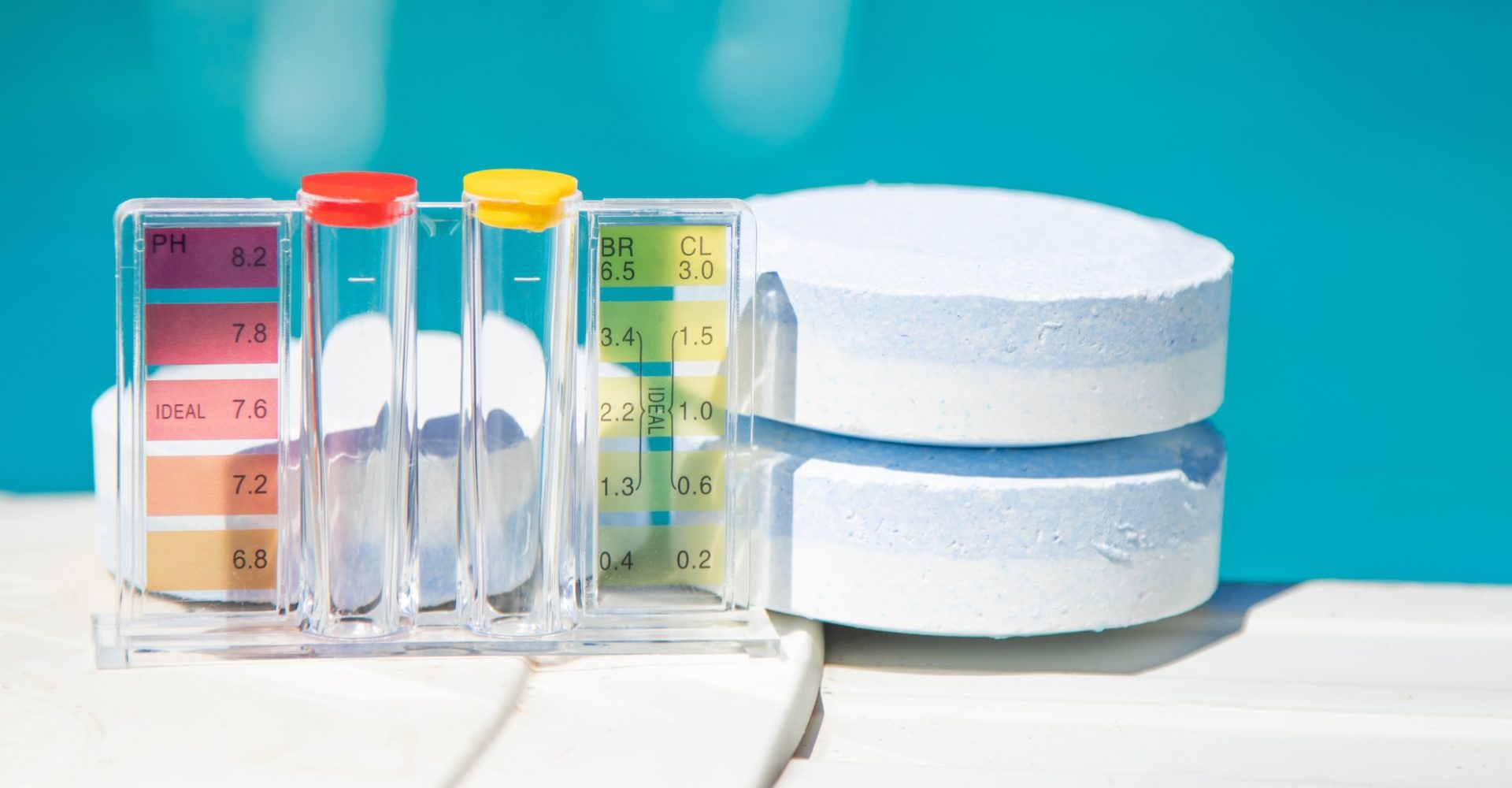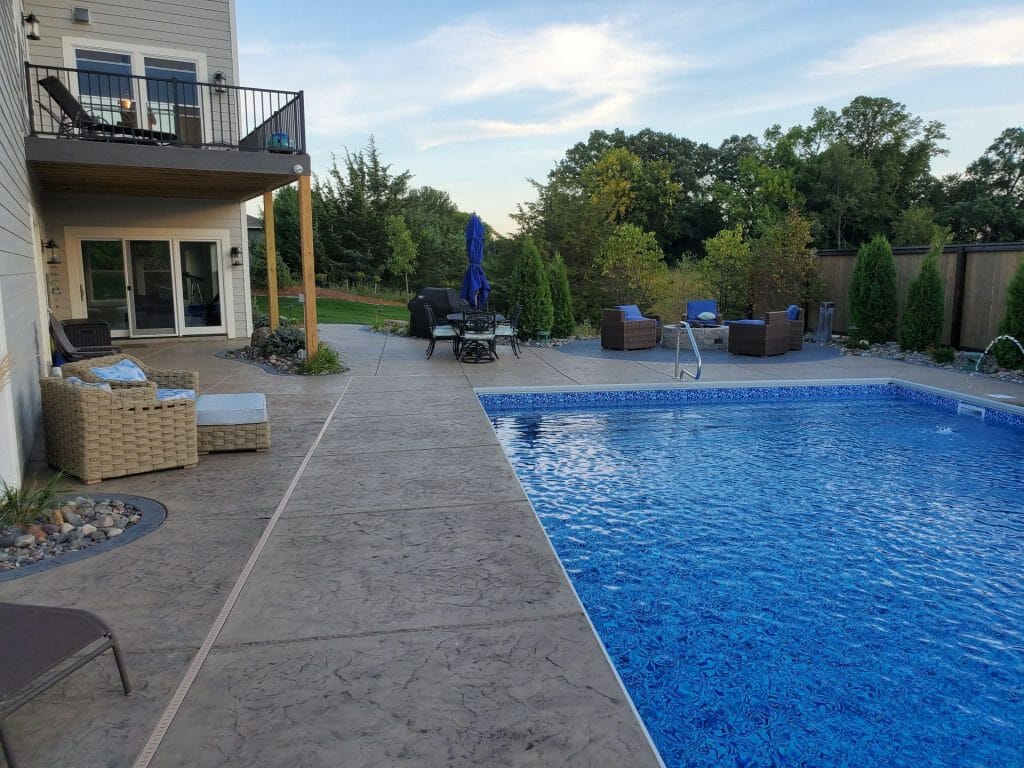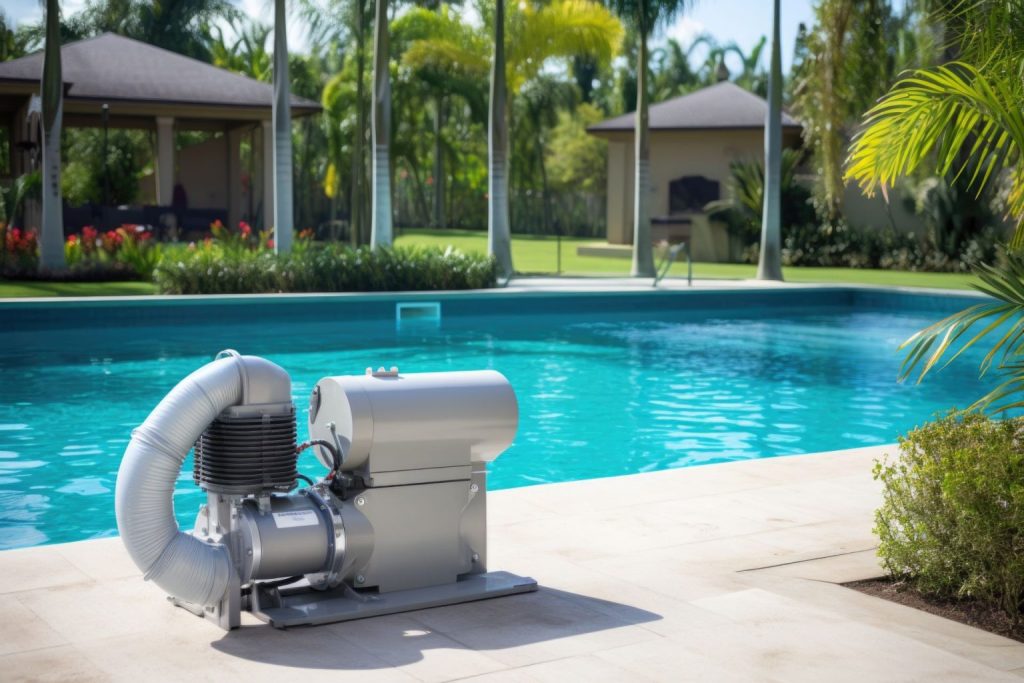
Every pool owner wants to optimize the chlorine levels in their pool. Maintaining a balance between keeping your pool water clean and soft while also limiting the harsher side effects of heavy chlorine use can be a challenge. Let’s take a look at some practical ways to reduce chlorine in pool water while also keeping your pool safe to enjoy throughout the summer.
Chlorine was first introduced as a way to sanitize public water works in the 1890’s to prevent waterborne diseases. Adding chlorine to pools, both public and private, became a widely used practice in the United States by the 1920’s to maintain healthy swimming water.
Overall, the process is a fairly easy and inexpensive way to soften pool water and keep it clean and sanitized. However, it does have its drawbacks and many pool owners look for chlorine alternatives to mitigate them.
Some common concerns connected to chlorine usage in pools range from skin irritation and smell to environmental damage and long-term health issues. Overuse of chlorine can also damage pool equipment as well as fabrics, like swimsuits and towels.
Chlorine is a chemical and when combined with water, which is exactly what adding it to a pool does, it makes hypochlorous acid which can disrupt the skin’s natural moisture barrier and cause some people to experience dry, itchy skin. These symptoms are not an allergic reaction, but an actual chemical burn that affects the skin’s epidermis layer. This reaction is more apparent for some people than others.
The strong chemical smell that is commonly associated with the use of chlorine in pools is not caused by the chemical itself, but by the chemical reacting to its disinfecting properties. When chlorine “cleans” a pool it reacts with contaminants, neutralizing them and producing a byproduct called chloramines. It is this byproduct that creates this well-known smell and means the chlorine is doing its job. However, it can be overly strong and linger in the air, on skin and fabrics. Some people also find it irritating to their nose and eyes.
Chlorinated water, when not properly discharged, can cause water pollution and environmental damage. If chlorinated water enters storm drains and waterways it can negatively affect aquatic life and ecosystems. Excessive use of chlorine can also affect air quality and its production requires a high use of energy and resources.
The long-term use of chlorine in pools can also cause potential health problems in the respiratory system, such as asthma-like symptoms of coughing, wheezing, and difficulty breathing. It can also cause health issues with the skin, hair, teeth, and eyes.
All of these issues have led to a rising interest in finding more natural or eco-friendly pool maintenance that can reduce chlorine in pool water without sacrificing sanitation.

There are many products and alternatives systems on the market today that can eliminate or reduce your chlorine usage. Let’s compare the pros and cons of each of these chlorine alternatives and explore their costs.
A saltwater pool system uses a salt cell and a process of electrolysis to continuously produce chlorine, which cuts down on chlorine usage by eliminating the need to manually add chlorine tablets or granules. This pool system still uses chlorine, but reduces its usage by 40 to 50 percent compared to traditional chlorine pool systems. Converting an existing chlorine system to a saltwater pool system costs on average about $2000, but there are long term savings from not having to continuously add chlorine to your pool.
This chlorine alternative uses ultraviolet (UV) light to neutralize contaminates. The system basically works by passing the water through a UV chamber as a part of your regular filtration system. Within the chamber, the water is exposed to UV rays that prevent microorganisms, bacteria, viruses, and algae from growing. Chlorine is still used in this system but at a significantly lower level than a traditional system. Installation costs of the system depend on your pool size and other factors, but usually come in approximately under $2500, on average. Regular cleaning and bulb replacement are other cost considerations.
This type of pool purification system is a high-efficiency way to reduce reliance on large amounts of chlorine gas to sanitize your pool water. It uses ozone gas, a highly reactive form of oxygen, as a sanitizer to kill bacteria, viruses, algae, and other pool contaminants and is more effective than chlorine at purifying water. The ozone gas enters your pool through the regular circulation system. Although the system is highly effective, it does come with a higher price tag and installation costs than the other systems. It also requires regular maintenance and proper ventilation is needed as breathing in large amounts of ozone can be harmful.
Although not completely eliminating chlorine usage, mineral pool systems are a low chlorine pool alternative that can lower chlorine usage in your pool by 50 to 80 percent. The systems clarify and purify pool water by adding minerals, such as potassium, magnesium, or sodium chloride to your pool water where it dissolves and acts to rid your pool of bacteria, viruses, algae, and other contaminates.
There are also copper or silver-based mineral pool systems that use these mineral ions to neutralize contaminates, such as bacteria and algae. The water passes through a self-oxidizing electrode or ionizer to release these minerals into the water. There are issues with these systems, especially if not properly cleaned and maintained, that can cause staining, water imbalance, and over-ionization.

There are also natural pool care additives that can work alongside your existing systems to boost sanitation without raising chlorine levels. These alternatives are chemical-free and eco-friendly, and can especially cut down on runoff issues that can harm the environment. They promote less cloudy and cleaner water with lower maintenance costs.
Enzyme-based cleaners are a class of cleaners that use naturally occurring proteins to remove organic materials, such as body oil and sunscreens, and other contaminates, from pool water, which prevents the growth of bacteria and algae. This in turn reduces the need for chlorine. They can help improve water clarity and reduce pool maintenance.
These eco-friendly alternatives to chlorine-based products use natural and biodegradable ingredients to effectively clean your pool water without the use of harsh chemicals.
These chlorine alternatives are safe for kids, pets, and others who have skin, eye, and respiratory sensitivities.
Pool water treatment is about balance. The pH, alkalinity, and hardness of your water dictates the level of chlorine you require to maintain a clean and healthy balance. Monitoring these levels allow you to have control over your chlorine usage and reduce chlorine in pool water even in traditional pools. Again, proper balance is key to reduce chlorine demand and monitoring chemical levels should be a normal part of your pool maintenance routine.
Pool maintenance tips for monitoring chemical levels in your pool include:
Another maintenance consideration that will help reduce your reliance on chemical shock treatments to keep your pool clean and safe is ensuring your filtration system is working properly. Regularly clean and inspect the functioning of your pool filter. Also, make sure you run your system long enough to properly filter the water.
Less chlorine does not mean less clean. It does mean that you can incorporate alternative systems and better maintenance habits to reduce chlorine in pool water for a smarter, safer, and more sustainable swimming pool.
Do you want to explore alternative systems and habits to help reduce your usage of chlorine? Contact Tracer Pool and Landscape to help you assess your pool situation and install a more sustainable pool system.